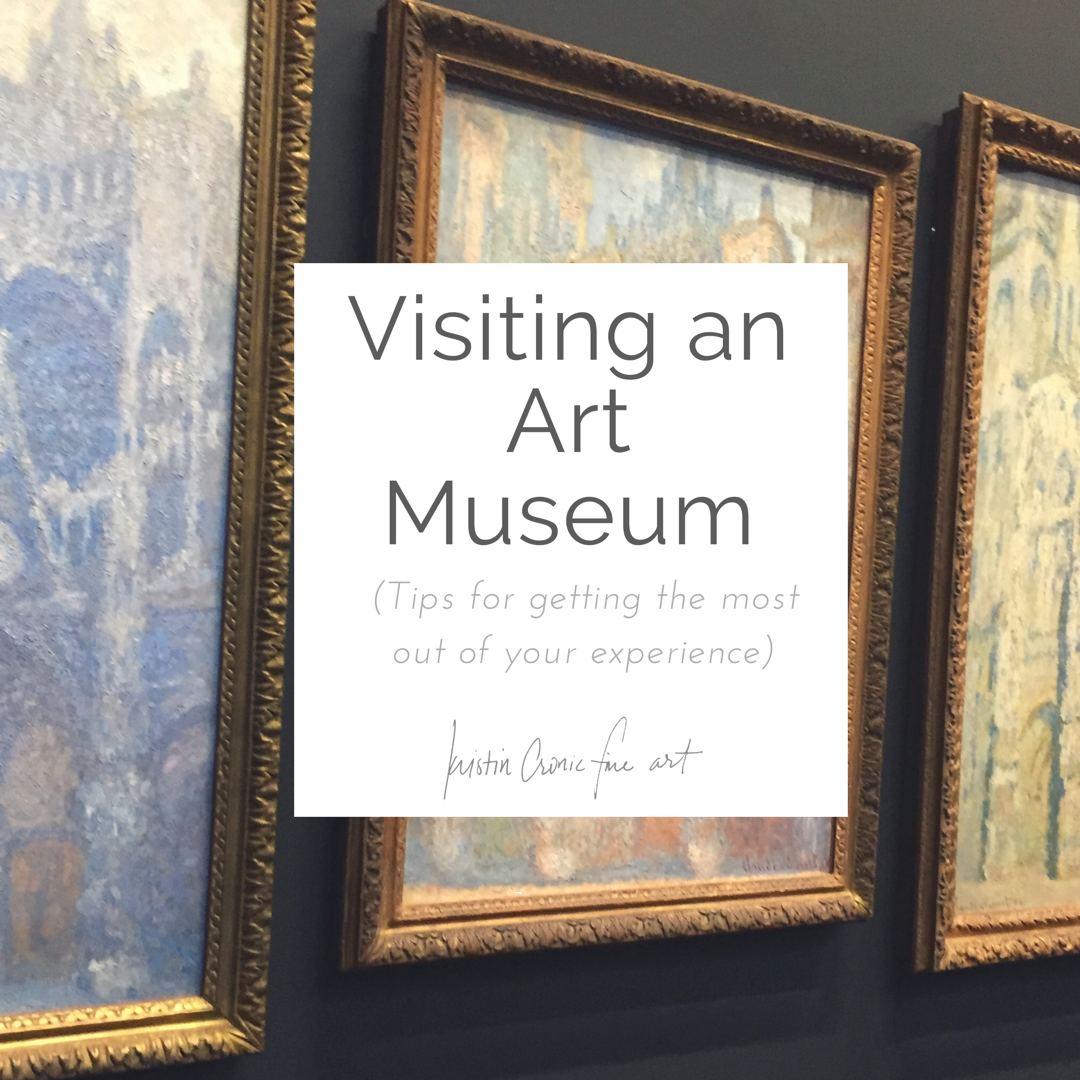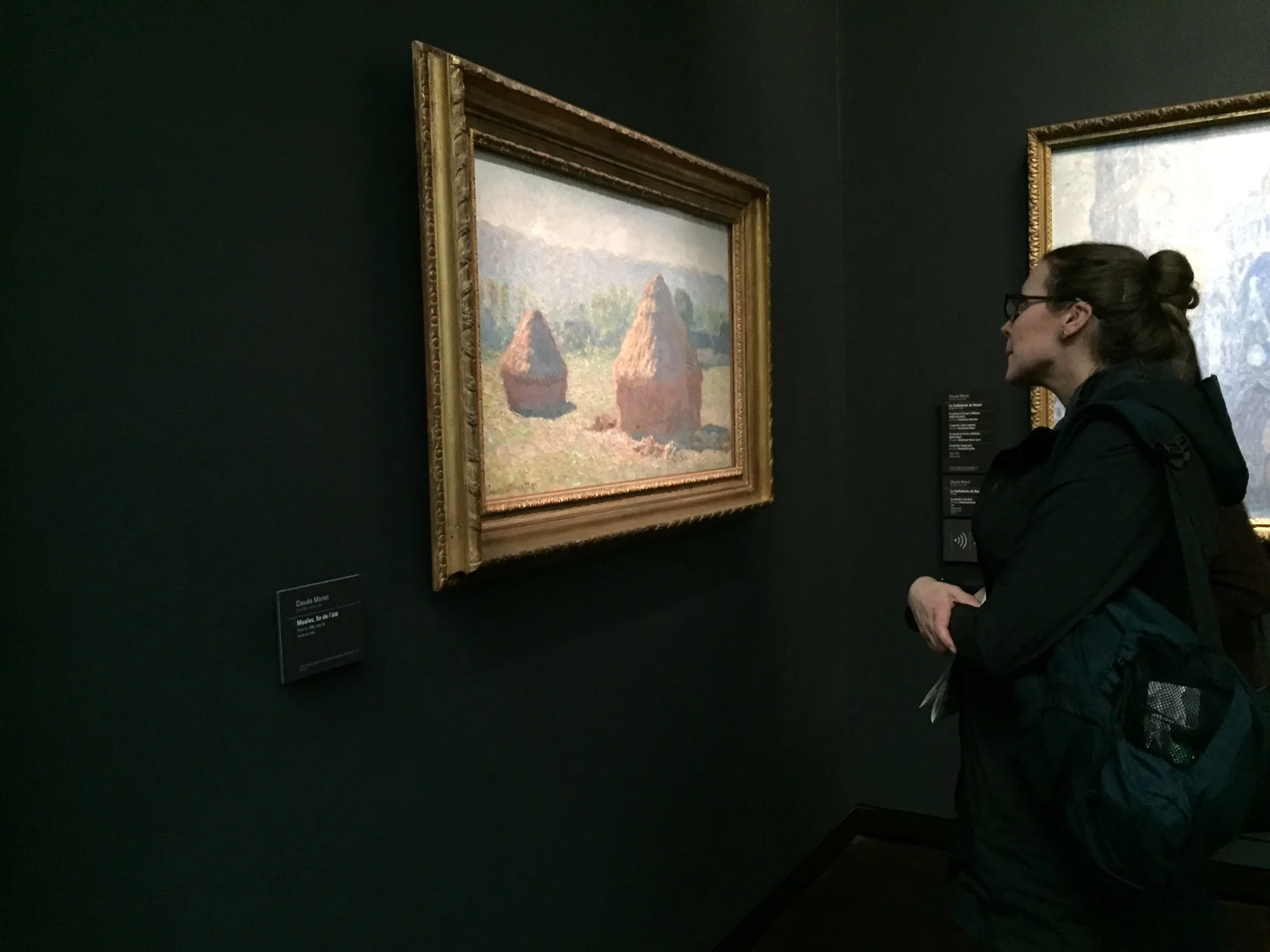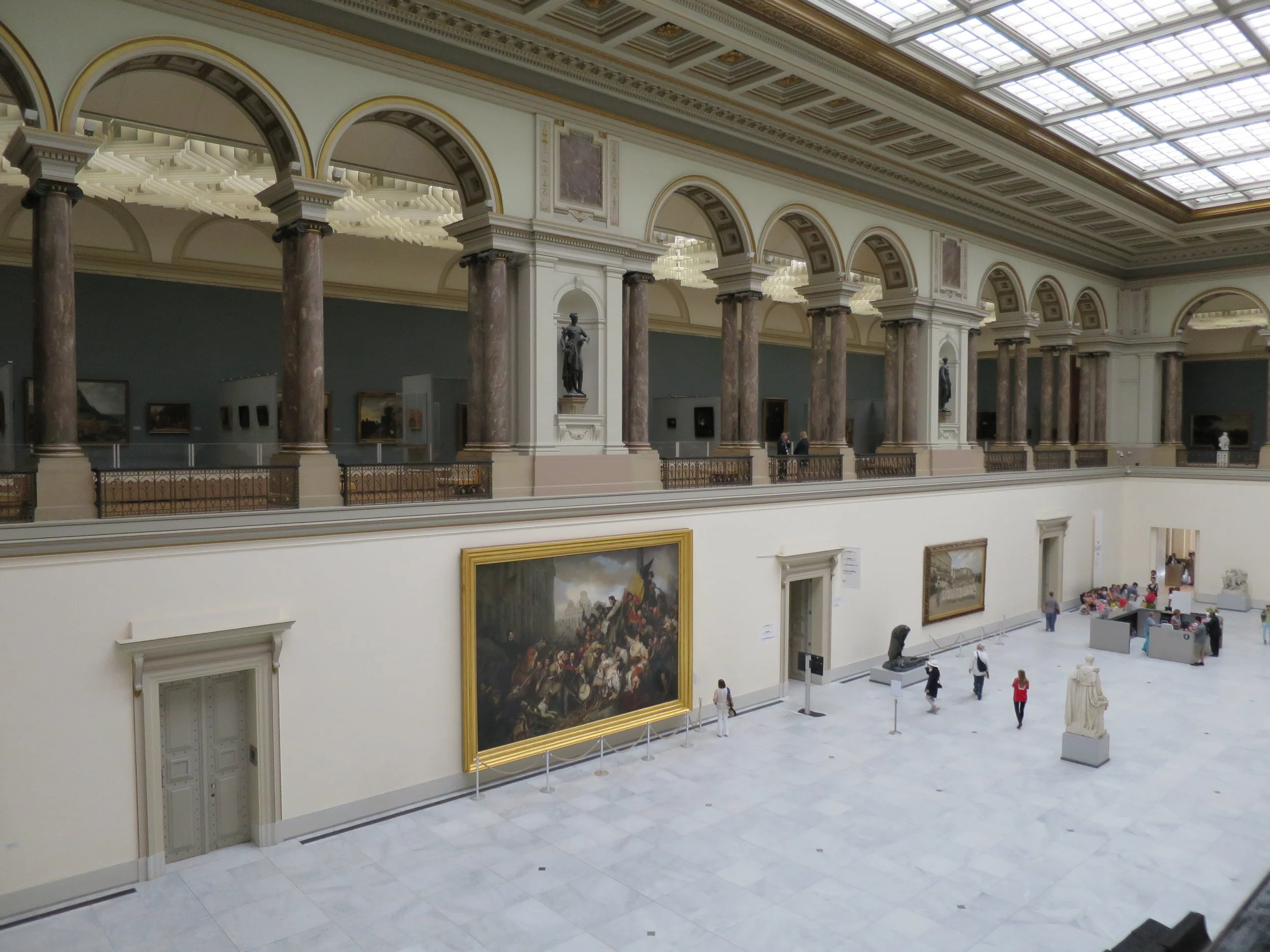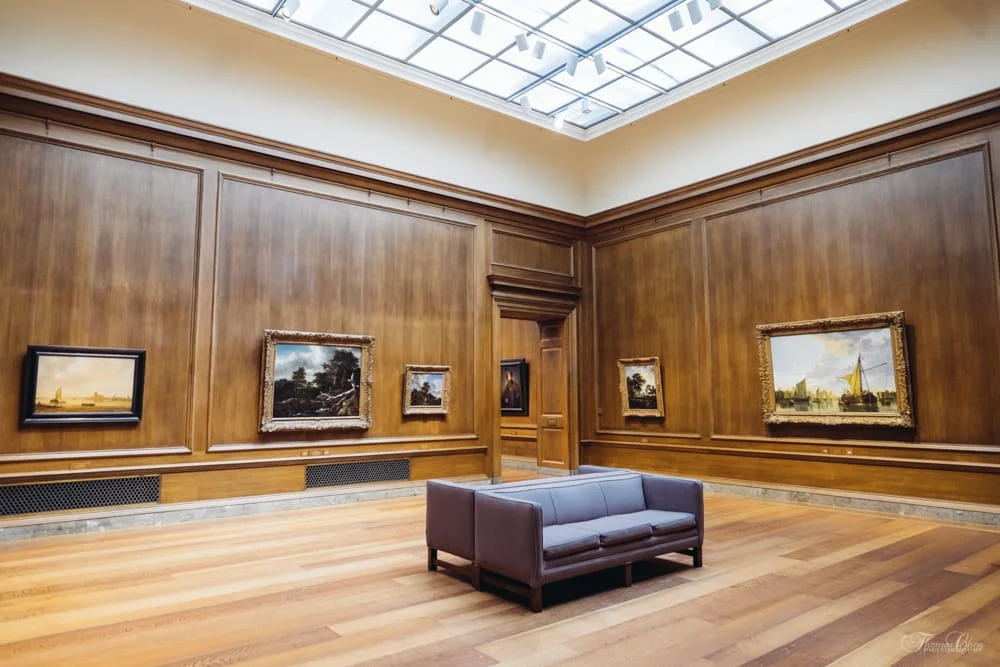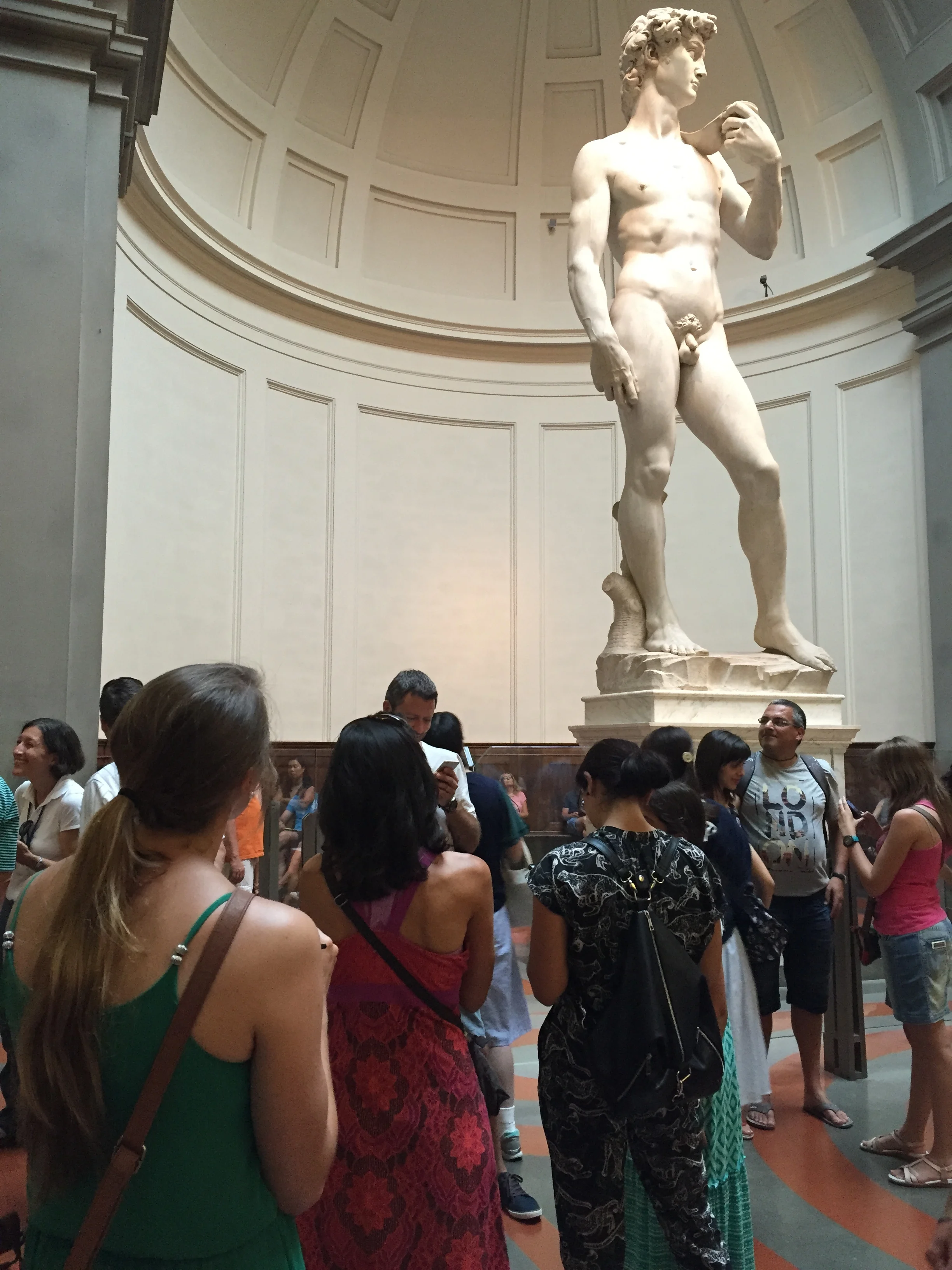Getting the Most out of your visit to an Art Museum
If you are anything like me, you are overwhelmed with an “imposter” feeling when you visit a museum. Art is for posh New Yorkers, or scholars who understand every intricate thread in the tapestry of the world’s history. Yes, I am an artist, but that doesn’t make the art scene any less intimidating. I have taken many classes, but do not have a formal art degree, and while I’m extremely interested, most of my art history education has come from books. Rick Steves, might I add.
Yet, art is for everyone. Everyone.
Elementary school teachers, engineers, postmen (I’ll prove it in the article below), creatives, non-creatives, parents, children, and those with, or without, an art education.
So, I asked some friends what they thought. They all happen to be artists, but who better than to consult than a group of people who can’t wait to wake up in the morning and express themselves visually.
In conversing with one of them (the postman, Robin), he says in an email something so simple, but profound. When you read the following interviews, consider what Robin had to say:
“How flat and gray our lives would be without art.”
Flat and gray, indeed. I think you will enjoy their insight. Consider these thoughts the next time you visit a museum!
(Answers have been edited minimally for formatting).
Orsay Museum in Paris, France
Do you have any steps you follow when looking at a piece of artwork?
KS: I don't use steps, per se. But I do look briefly at a work...actually usually several pieces in a gallery or museum, as they are most often grouped by a theme of some sort, and then will return to each piece for further contemplation. Sometimes, I will look to see how the composition of the piece emphasizes the title or theme of the work, or if it's a painting, how the brushwork adds to that. I also think about how I FEEL when looking at the work, what emotions are touched when viewing.
JF: This depends upon whether or not I am familiar with the artist. If I'm not and its in a museum I will read the information beside the artwork to gain an insight into the piece and the artist. Especially so if I'm unsure of my reaction to the artwork as it sometimes will help me to understand the artists intention. If I do know the artist I tend to 'feast' my eyes first on what is new, perhaps its subject matter, technique, format, surface etc. If I'm looking at artwork online or in a book I enjoying reading about the artist and also looking at their older work if possible. There's always then the close up look I take, asking myself 'how did they do that' and to consider composition, colour and brushstroke.
MH: 1. Take in the artwork as a whole and focus on my reaction to it. Does the work draw and hold my attention? What is it that appeals to me...for painting: color, structure, narrative, the way the work plays with the space around it (sculpture), or virtuosity of craft in its making? 2. I read the information provided by the curator, especially if it is a special exhibition. Which may help me understand where this work fits into the artist's body of work, or the work of his/her contemporaries, or the current societal issues at the time it was made. 3. If the work really speaks to me, I might imagine the decisions the artist might have made in its creation. I often play a game with people I am with. After viewing the entire exhibit, we each select one work that we would take and hang at home, if we could. I also will review the exhibition catalog in the gift shop. If it has good pictures of my favorite paintings, I will buy it, so I can reflect on the exhibit when I get home.
RD: I like to give the work plenty of time. I'll take a seat if possible. Close my mind off to other distractions. Breathe deeply. Spend a minimum of 15 minutes looking. I tend to ignore captions until after I've looked at the artwork.
HC: Not really. I look and absorb the work before reviewing any written tags or commentary. I try to get right in front of the work and if the museum/gallery is crowded wait until I can squeeze in right in front to get a close look.
Hidden show in the basement of a sinking building in Venice, Italy
What are some questions or observations a person should consider when looking at art at a museum (or anywhere for that matter)?
JF: Apart from what I have mentioned, history plays a big roll in art movements. Therefore consideration of economic and social events of the time that the artwork was created can influence the aesthetic of the piece, in turn stirring positive or negative emotions in a person.
MH: 1. How does it make you feel or think and why? 2. Is it similar to other work you have seen and liked, or is it something different? 3. Look more closely at how you answered why in the first question and ask if that is why you like other works. Afterwards, you might start searching the internet to find other work by the artist or which has similar characteristics.
RD: Does this piece move me in anyway?(I have to 'feel'it first before considering other questions) If so, why? Subject? Use of materials? Technique? Is the artists intention manifest?
HC: What do you like? Find that first then look at everything you think you don’t like and consider why not.
Royal Museum of Fine Art- Bruseels, Belgium
What is one of your most memorable personal or artistic breakthroughs you have had while observing someone else’s art? (Who’s was it and what piece was it?)
KS: Probably my most profound experience occurred when viewing the restored Archimedes Palimpsest at the Walters Art Gallery in Baltimore...but remember, I practice science (and have a minor in math) as well as art! The astonishing beauty of Archimedes' images and treatises under the Byzantine prayers strongly, strongly influenced my work and I use it to this day! I love the physical structures described and but I have always been awed by the beauty of the mathematics and/or written verbiage that describes these images as well, and the two are perfectly blended in the Palimpsest. The second general type of work to exhibit a profound effect on me is American art...John Singleton Copley, Martin Johnson Heade, George Caleb Bingham, Asher B. Durand, Thomas Cole, Fitz Hugh Lane, Thomas Eakins...I could go on and on and on! Though generally looked down on by the contemporary European artists for being so American, that is precisely why I just love the work...it presents an entirely new and consistent and unique and generally joyous point of view. This has served to tell me, when doing my own work, to preserve the uniqueness of my point of view, regardless of how the rest of the world reacts to that.
JF: It was some time ago when looking at Arthur Streeton's painting 'Ocean blue, Lorne' 1921 at the Geelong Gallery and it was pointed out to me how the trees were simply massed in, there wasn't a lot of detail yet they worked perfectly especially from a distance. It was a piece of the jigsaw revealed to me.
MH: I dont think of it as a breakthrough per se, but the most memorable moving experience was coming face to face with Donatello's Sculpture of Mary Magdelen in the Bargello Museum in Florence. 2nd place goes to the experience of turning on the lights in Santa Felicita, also in Florence and seeing Jacapo Pontorma's deposition from the cross fully illuminated in all its glorious color. I experienced a palpable shift in my emotions in both cases. I can still feel those moments 43 years later.
RD: I suppose this would have to be my first visit to the National Gallery in London at the age of 14. I always drew and painted as a child but had no concept of an 'artist'. Then I entered this building to be confronted with huge paintings,depicting gods and monsters, kings and queens, myths and legends. Everything was rendered with an astonishing magic-silk, satin, wood, water, sky, flesh, hair, tears. I couldn't believe this was just paint. Then I saw 'An Experiment on a Bird in an Air Pump'by Joseph Wright of Derby. That's when I knew I wanted to be an artist.
HC: How Cezanne lays it down. How hearbreaking his portraits are and how pattern and color and repetion can create worlds.
Hillside in Provence, Paul Cezanne, National Gallery of Art, London, England
Do you have any advice for people without an extensive knowledge of art or art history while they visit a museum?
KS: It depends first on the size and scope of the museum, but even for a museum that isn't completely vast, I think it's best to concentrate on just a few areas of the museum for each visit...say American Art, the Byzantine collection, and/or perhaps one of the special exhibits. Then take your time! When I'm unfamiliar with that body of work, I generally wander a bit looking briefly at pieces to get a general feel for the work. Then I go back to those that have grabbed my attention and look carefully, all the while thinking about why they have piqued my interest. At this point one can look for common themes in all of the work - the things that make the work so American, for instance - and then spend some time looking, really looking, at some of these works to note things like picture composition and how that adds to what the work is talking about. If looking (again) at something like American art, it is fun to see how it evolves and changes over decades.
JF: It's great to attend with someone more knowledgeable in the field of art and art history as they can educate you and discuss the significance of particular artworks that otherwise you may have not even noticed. It can also be valuable to take a guided tour or listen with a headset as you wander through the exhibition. Visiting a museum can be an overwhelming experience so its often good to make return trips if possible and just look at one room or exhibition or with one goal in mind, e.g portraits and hands or simply colour.
MH: Start by getting in touch with how the work makes you feel. If you don’t get a strong feeling, go to the next one. When you do get a strong feeling, stay with it and try to identify what you feel and why. The more you do this, the more you might see and understand. Have fun.
RD: Try to leave all that cultural baggage at the door. It can be quite a burden, all that huge weight of Art History and Theory. It's impossible to know everything and can smother your enjoyment. Choose just half a dozen pieces. You may be drawn to 15th Century Italian painting. Or Abstract Expressionism. (Don't worry if you dislike either periods. It's your choice, no-one else). Over time, you will accrue knowledge anyway, in a far more enjoyable, enriching way. Again,you have to be moved in some way. Also,read books in the comfort of your own home. Take small steps and enjoy the journey.
HC: Keep an open mind and look at everything. You never know where the thunderbolt will strike you.
Do you have any other comments or thoughts on the subject you would like to share?
KS: Enjoy these visits! Open yourself to the experience and allow yourself to be brought into the work as you would when watching a movie or reading a novel. And most important, don't worry about what you know or don't know about the work...just absorb and ENJOY!
JF: Visiting museums, galleries, exhibitions and studios to view artwork in person is very worthwhile in so many ways, I usually have a much more interactive experience than I do when viewing artwork online and come away inspired.
RD: Art galleries can be intimidating. Yet Art is for everyone. Don't let cultural fascists tell you otherwise. You are your own critic and you tailor the art for YOU and YOU alone. It must be remembered that a lot of art, contempary in particular, is driven by the markets and money which influences the critics who alienate the public. Ignore all that. Enter a gallery as if you were a child, full of awe and wonder at all the beautiful objects. Free from prejudice.
HC: Look at art for fun. It’s easy and rewarding and life enhancing.
Orsay Museum in Paris, France
Musée de l'Orangerie in Paris, France
Contributors:
Kathy Strauss: Kathy is a Baltimore based artist. She has an art degree, with math and biology minors, and she use ALL of her formal education. “I earn the bulk of my living in medical research (which I love) and exhibit my work frequently in the Baltimore area...sometimes venturing into (most recently) New York City, Pittsburgh PA, and Washington DC to exhibit. My art largely talks of the unbelievable loveliness of math and science.” Check it out at kathystrauss.com!
Julie Fitzpatrick: Julie is an emerging artist, living in Australia with her family, learning something new everyday with her art. She enjoys painting with oils and is drawn to portraiture, however she likes to paint still lifes and landscape as well. Her instagram is @julie_fitzpatrick_
Marguerite Heilman: Marguerite hails from Bucks County, PA. “I paint things that move me, the space of a room or the land, the play of light, the attention an animal (or person) might give you if you hold its gaze. I paint the experience, giving it life with color and gesture. “ More of her work can be found at www.mheilmanart.com.
Robin Delaney: Robin is 52 years of age, married with no children, residing in Dawlish, Devon, UK.. “I work part-time as a postman (30hrs per week) [which is] an ideal job as it supports me enough and the early finish times mean I can get to the studio between 1pm-2pm.” He is a figurative painter. More of Robin’s work can be found at robindelaneyartist@yahoo.co.uk “That's all folks! Cheers"
Hilary Clayton: Hilary works in paint and pastel and printed ephemera. She is currently offline
About the author: Kristin Cronic is an artist residing in Jacksonville, FL, working primarily in oil. She has always wanted to be an artist, so she made the obvious choice to join the Navy after high school. The U.S. Naval Academy and over six years of active duty service proved to be the adventure she was looking for. She no longer deploys or moves, and is enjoying putting down roots in her hometown with her husband, two kids, and Doberman-Shepard…and finally having the time to pursue art.
This was a life changing moment in front of a piece of art. I have had a couple, but this was my first. At this stage in our trip, we had been to so many museums, many of which saved their best for the end. We were prepared to wait to see “David,” but upon turning a corning in the Accademia Gallery in Florence, I saw Michelangelo’s prisoners (which are completely stunning in their own right). That could only mean one thing…. I looked up, and there he was. It took my breath away.
Love chatting about art and creativity? Join my email list for updates on new posts and insights on lovely creative things!

